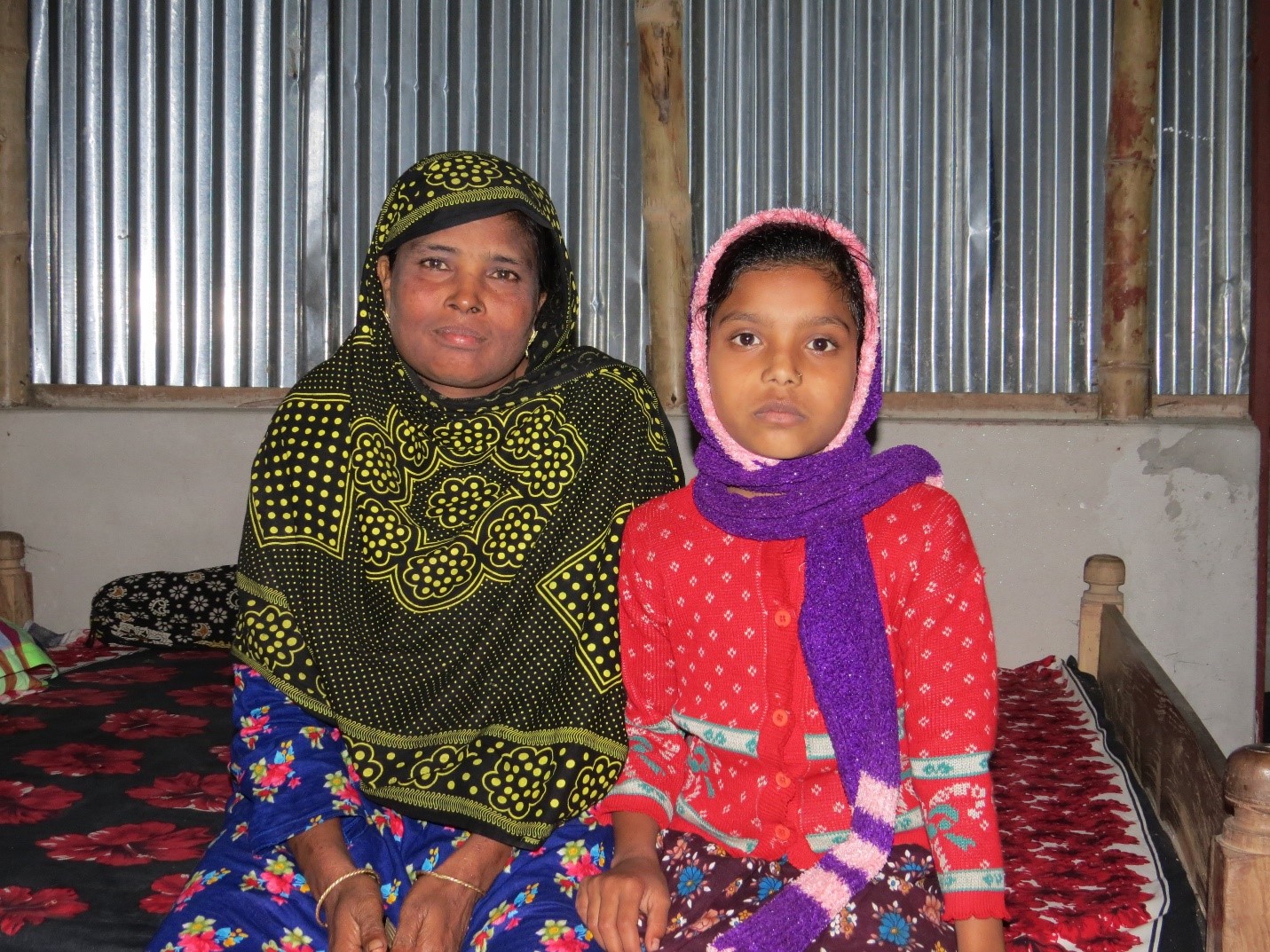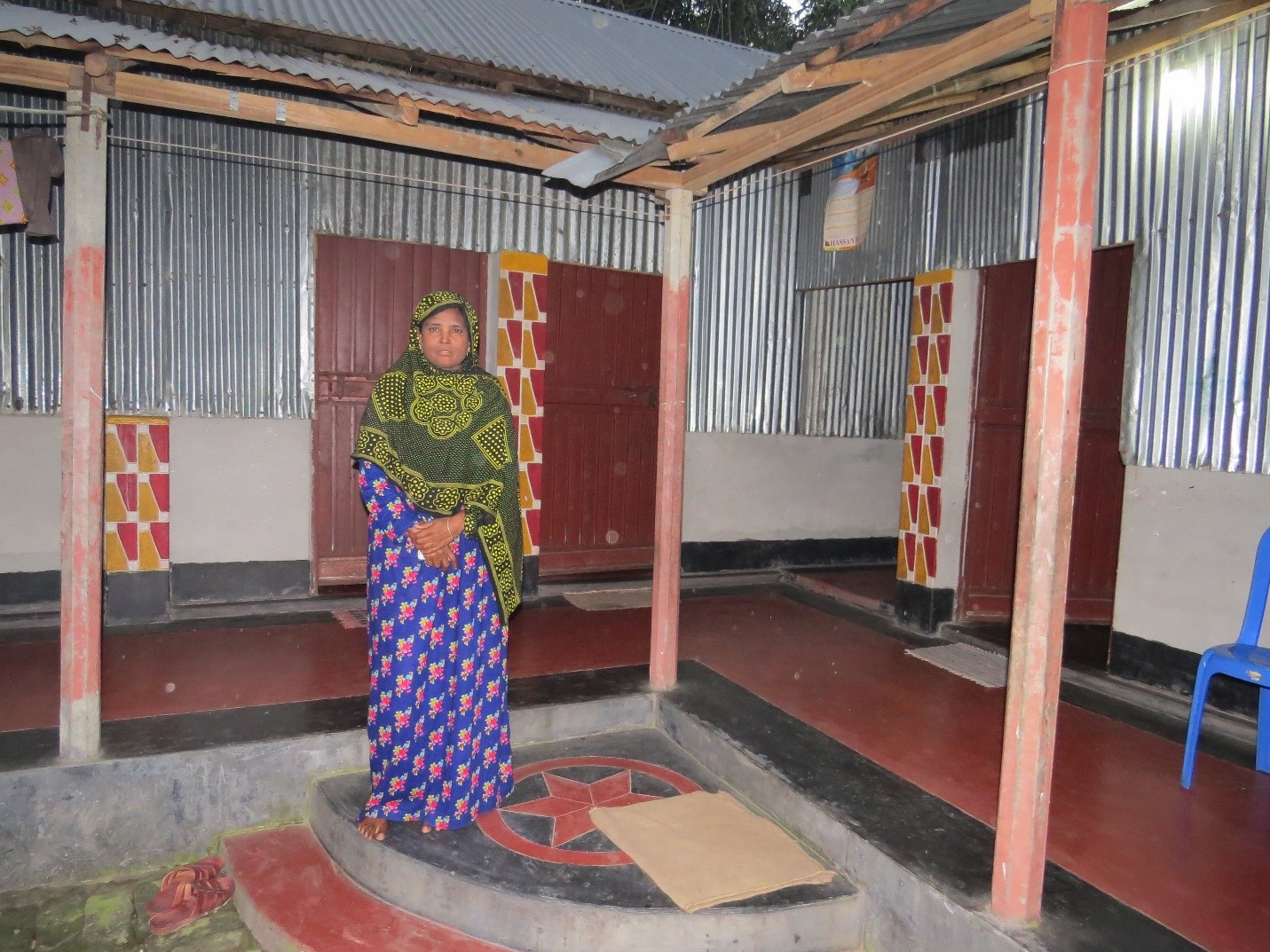The Graduation Approach: Golenoor's Journey Out of Ultra Poverty
 Golenoor used the corner of her shawl to wipe tears from her eyes as she told me about what her life had been like 20 years ago. A recent widow, suddenly on her own caring for a one and a half year-old son and daughters of eight and six.
Golenoor used the corner of her shawl to wipe tears from her eyes as she told me about what her life had been like 20 years ago. A recent widow, suddenly on her own caring for a one and a half year-old son and daughters of eight and six.
“Those were such bad times after my husband died. He had cancer. We spent a lot of money trying to help him. Nothing worked. Then he was gone. We did not have his income, and I had three children to take care of.
“I got married to him when I was 11. He was much older than me. We had nothing. Our house was made of bamboo and banana leaves. When it rained, we all got wet. “After he died I worked in other people’s houses and in their fields. They would give me something to eat for lunch and pay me 30 taka each day (about 50 US cents). I would take most of the lunch home with me to feed the children. There were days when I had nothing to eat, but I made sure my children always had food.
“We lived that way for two years. Thanks to Allah my children never got sick. I could not have paid for them to go to the hospital if they had.”
At that time, Golenoor found herself trapped in a cycle. On good days, she earned enough in food and money to replace the calories she expended in her work and to sustain her children. During fallow times she went hungry to keep her children healthy. In survival mode, Golenoor could not earn enough to accumulate the surpluses needed to improve her situation. Over the long term, her situation was bound to get worse when some inevitable negative shock came to her family. She might get sick and not be able to work. A monsoon could destroy her fragile shelter. One of her children could get sick and Golenoor would have to choose between leaving the house to work and get food for the family or staying home to care for her child.
Raised in poverty with no formal education, married as a child, Golenoor also raised her children in poverty, unable to send them to school.
Golenoor stopped her story to get up and check on the kettle. She came back with tea and plain cake for all of us sitting in her living room. The house we sat in looked nothing like the bamboo and banana leaf structure she had described to me. Shaped like an L, it contained three bedrooms, a living area and a kitchen. The house sat on a cement foundation that rose half a meter off the ground. Plaster covered the first third of the walls, corrugated iron panels covered from there to the ceiling and also formed the pitched roof. Teak beams grounded in cement held the structure securely. Electric current powered the lights that came on as evening fell.
As we drank our tea Golenoor showed me pictures of her children. Her son finished high school and now works in Palau, a country in the north Pacific, sending money back to her each month. Her daughters completed their high school educations and then got married. Golenoor’s home now includes two other children. She took over the care of her nephew after his mother died. He’s now in his second year of university. Golenoor also watches her granddaughter, who passed an entrance exam to an exclusive school near Golenoor’s house. On the bookshelf I see the schoolbooks for each, a grade school primer for the granddaughter, Principles of Accounting and Business Communications for the nephew.
 Twenty years ago Golenoor and her children lived in ultra poverty, trapped in a vicious cycle, unable to generate enough surplus to tear herself from the gravitational pull of the poverty she had been born into. Today Golenoor lives much more comfortably, and she has broken the generational transfer of poverty. Her children have received education and have good work. Golenoor has enough surplus to support other family members like her nephew and granddaughter. She described her change in status this way, “Before, when there were weddings and celebrations, no one would invite me. They knew I could not afford to bring a gift. Now I get invited to all of them. People in the village come to me now and ask for my advice and help.”
Twenty years ago Golenoor and her children lived in ultra poverty, trapped in a vicious cycle, unable to generate enough surplus to tear herself from the gravitational pull of the poverty she had been born into. Today Golenoor lives much more comfortably, and she has broken the generational transfer of poverty. Her children have received education and have good work. Golenoor has enough surplus to support other family members like her nephew and granddaughter. She described her change in status this way, “Before, when there were weddings and celebrations, no one would invite me. They knew I could not afford to bring a gift. Now I get invited to all of them. People in the village come to me now and ask for my advice and help.”
What made this transformation possible? Mostly Golenoor’s own skill and hard work, with an important assist from BRAC, the world’s largest nongovernmental organization, and recently rated the best NGO in the world as well. After 30 years of operating separate programs for health, education and economic opportunity, BRAC found that it was still missing people like Golenoor, people too vulnerable to be willing to take out a microfinance loan, and too hidden to be noticed by most development workers. BRAC spent some time studying ultra poverty and its causes, and reflecting on its own development experience. With this combined knowledge, BRAC then developed the Ultra Poor Graduation approach. Golenoor was in the first cohort of people that BRAC worked with using this approach, starting in 2002.
Golenoor’s story is not unique. There are more than 1.8 million women like her in Bangladesh that have graduated from ultra poverty to providing a stable livelihood for themselves and their families. Scientific studies of the approach using randomized control trials have proven the durability of the gains these women make.
I spent a week in Bangladesh earlier this year to learn more from BRAC’s approach and to see how it could apply to our global effort to end poverty. Over the next few weeks I will be giving more details of how this program works, how it fits with RESULT’s focus on health, education and economic opportunity, and what we plan to do to make this approach one of the pillars of our advocacy work.